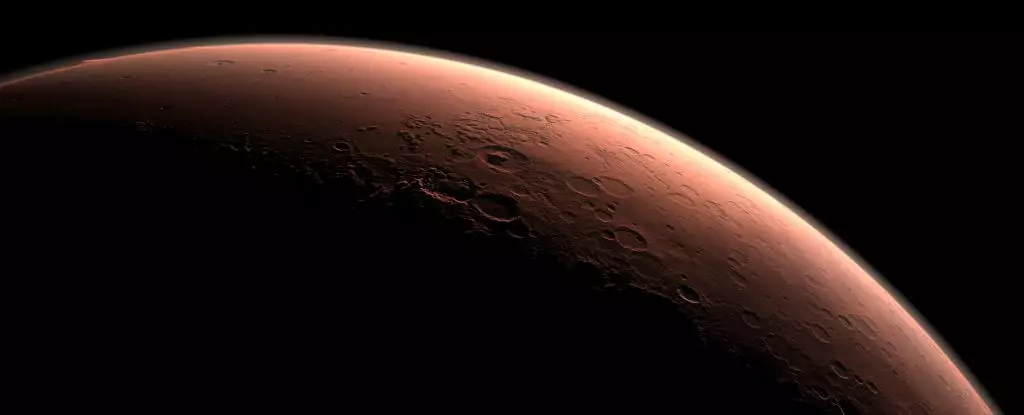Despite extensive exploration of Mars, humanity has yet to find conclusive evidence of life on the Red Planet. Since the inception of the Viking landers’ missions in the 1970s, scientists have been captivated by the mysteries that this barren landscape offers. The Viking landers marked a significant milestone in space exploration as they became the first U.S. missions to land on Mars and conduct surface-level investigations. However, while these missions provided a scrum of scientific findings, the potential indicators of life have often been shrouded in controversy and misinterpretations.
Recent insights from researchers like astrobiologist Dirk Schulze-Makuch, associated with the Technical University of Berlin, suggest a paradigm shift in our understanding of these critical earlier missions. Schulze-Makuch raises an intriguing concern: that our very methods for detecting life on Mars may have inadvertently destroyed evidence of it. As we proceed with missions aimed at uncovering signs of biological existence, it is imperative to dialogue introspectively about the techniques we are employing and the assumptions underpinning them.
When Viking 1 and Viking 2 touched down on Martian soil in 1976, they carried a suite of experiments designed to detect signs of life. Among these was the gas chromatograph-mass spectrometer (GCMS), a piece of equipment primarily tasked with analyzing the composition of Martian soil. Initially, the discovery of chlorinated organics in the soil seemed to indicate contamination from terrestrial sources. However, recent realizations suggest that these compounds could be native to Mars, although the ultimate source—biological or non-biological—remains unresolved.
The experiments conducted did yield ambiguous results. Notably, the gas exchange experiment recorded inconsistencies, particularly when juxtaposed with findings from the labeled release and pyrolytic release experiments. Observations suggested potential signs of microbial life, but the results were obscured by conflicting data. Such disparities have led Schulze-Makuch and others to advocate for a revisionist examination of the Viking mission’s findings.
Schulze-Makuch has posited that the very processes used to identify potential life forms may have stifled our search. For instance, the GCMS operated at high temperatures to analyze soil samples. This heating could have incinerated organic compounds those experiments were intended to unveil. The irony here is profound: in our quest for knowledge, we may have rendered the ancient Martian organic molecules unreadable.
Moreover, the methods employed in the labeled release and pyrolytic release experiments might also have compromised the results. These experiments were predicated on the assumption that life on Mars would closely resemble terrestrial life, particularly in its need for moisture. This assumption led to an experiment design that involved infusing Martian samples with liquids, potentially overwhelming life forms adapted to the planet’s desiccated conditions. The implications are staggering: we may have sacrificed vital evidence of life by exposing it to an inhospitable environment.
The implications of Schulze-Makuch’s analyses extend a hand to future exploration efforts, advocating for a fundamental reassessment of what constitutes viable methods for searching for life on Mars. There is a growing acknowledgment that life—and particularly microbial life—holds an astonishing ability to adapt to extreme environments. The Martian landscape, characterized by dryness and fluctuating temperatures, may host forms of life that utilize water less liberally than we are accustomed to on Earth.
In fact, the results from Viking’s pyrolytic release experiment were more pronounced in the absence of added water, challenging our preconceived notions about life’s requirements. Schulze-Makuch’s hypothesis that life on Mars might utilize hydrogen peroxide as an alternative to water further complicates our understanding. Could we be on the verge of antiquated interpretations of evidence simply because they fail to align with terrestrial expectations?
As we set our sights on future Mars missions, it is crucial that researchers adopt an exploratory strategy that prioritizes adaptability and humility. The next wave of explorations should incorporate a broader array of experiments while being mindful of the unique ecological context of Mars. A dedicated life search mission should seek to leverage our gained insights and perhaps employ technologies that minimize destruction, enabling us to be better stewards of Martian science.
As discussions surrounding life on Mars continue to unfold, the Viking missions remain a poignant reminder of the complex dance between discovery and methodology in planetary exploration. Our ambition should be to devise new, innovative strategies that consider life’s potential adaptations to alien environments. Only then can we hope to unveil the true nature of our neighboring planet’s enigmatic landscapes.


Leave a Reply